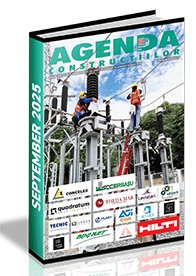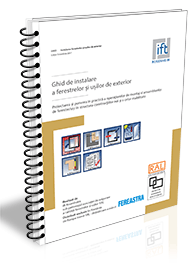| The pessimistic scenarios, confirmed by daily reality |
 |
 |
| English Section 01 Oct 2012 08:00 |
 We are currently reaching the fourth year since the start of the Wall Street financial-economic crisis, whose climax was the bankruptcy of Lehman Brothers and implicitly the unprecedented unbalancing of the international construction sector. The residential sector’s chaotic development, by encouraging the "sub-premium" system, lead to massive losses both for companies, and beneficiaries, a fact faced with a considerable intensity by the United States and West-European countries and soon after recorded, with punctual exceptions, by East European countries. Romania could not be avoided by this tornado and was strongly affected, especially considering that its economy was not consolidated enough, and managers’ experience was too poor to foresee or at least minimize negative effects. We are currently reaching the fourth year since the start of the Wall Street financial-economic crisis, whose climax was the bankruptcy of Lehman Brothers and implicitly the unprecedented unbalancing of the international construction sector. The residential sector’s chaotic development, by encouraging the "sub-premium" system, lead to massive losses both for companies, and beneficiaries, a fact faced with a considerable intensity by the United States and West-European countries and soon after recorded, with punctual exceptions, by East European countries. Romania could not be avoided by this tornado and was strongly affected, especially considering that its economy was not consolidated enough, and managers’ experience was too poor to foresee or at least minimize negative effects. Throughout the entire recession period, the respective subject was analyzed from all points of view both by experts and the specialized press. They tried to identify solutions, more or less optimistic terms were provided for reaching a balance point, innovative methods were proposed for overcoming current obstacles (most of the times borrowed from other industrial sectors) etc. None of these had concrete and perceptible effects, the analyzed sector continuing to inexorably follow a descending trend. The statement above applies particularly to the insulating joinery segment, whose situation is delicate due to the erroneous perception of this sector. In the end, particularly in Romania, at the level of beneficiaries and sometimes even authorities, thermal rehabilitation and the reaching of higher insulating levels have rather represented unessential elements, rather based on aesthetic grounds than ensuring a certain usefulness. As proof to this statement, the huge losses recorded countrywide by the heating resources, although many of the analyzed buildings were already provided with modern joinery units. Unfortunately, even at a legislative level, local provisions were still extremely permissive, a clear example being that in order to classify a building as class A of energy performance, a level between 70 kWh/sq.m*year and 100 70 kWh/sq.m*year is provided, which, in developed European countries (with weather conditions similar to those in our country), corresponds to the least performant groups. Below you can find a showcase of recession, based on identifying which of the forecasts made four years ago was confirmed by facts.
The illusion of a big demand - a trap for many entrepreneurs
At the beginning of 2009, the economic crisis was in an incipient stage, a phase when it had started to affect the West side of the continent, while in the Romanian region there were even optimistic opinions, according to which the chances of local industry "contamination" were null. However, there were also more pertinent opinions, warning of the imminent danger, of the national economy fragility when facing such a big challenge. As indicated by documents at the time, manufacturers displayed a rather nonchalant behaviour, even though massive drops in the growth pace were estimated, potentially up to 75%. Some sector entrepreneurs, who had already noticed this danger and were aware of the devastating effects of a crediting system crash, sustained from that very moment the need to urgently implement a customer-focused strategy, completed by the elaboration of the modern and high-performance marketing mix. Unfortunately however, such voices were isolated and lost in the uproar created by optimists who did not perceive the danger and even made inappropriate jokes on this subject. In the following months, the international market evolution confirmed the most negative scenarios, and European analysts started to gradually reduce economic growth forecasts. Euroconstruct statistics already "condemned" Spain to a long period of decline, and the East-European countries’ situation was perceived as very fragile (a fact actually confirmed even by the BERD analysts, who claimed that the accelerated deterioration risk of the region economic results was very high). All these were confirmed particularly for Romania, where the growth in the "boom" period had been particularly sustained by consumption credits, without sufficiently solid grounds in production. Thus, any financial system imbalance would have had disastrous effects on the apparent prosperity. The only element supporting the maintenance of the insulating joinery sector on an ascending trend was represented by the potentially huge demand, of over 10 million window units requiring immediate replacement, in order to be in line with the community requirements stipulated by the harmonized legislation. A single element, unfortunately essential, was disregarded - namely customers’ credit-worthiness, this indicator being to quickly fade away until almost completely disappearing.
Companies’ solidarity in front of the challenges was almost null
In the 2009 spring season, the first concrete signals of a tough recession were witnessed, confirming the start of a long period of decline. The local joinery market was defined by a high level of atomization, with other 5,000 competitors of various dimensions. Another negative element was represented by technological over sizing, there being companies which - against the background of wrong calculations - held fabrication capacities with a maximum 50% usage level (during peak activity periods). This chaotic development, for which it is useless to identify explanations, represented a true "burden" for the analyzed industry. The sudden demand drop immediately generated the impossibility to sustain the accessed crediting lines, which lead to the bankruptcy of the most exposed companies. More experienced managers had an immediate reaction, showing that the probability of a considerable decline process for a timeframe between 3 and 7 years is very high. The only hopes still supporting a moderated optimism were represented by the prospect of continuing the public program of existing buildings thermal rehabilitation. Another solution was represented by the support of employers’ organizations, which could have ensured a joint action in front of the challenges of recession, as well as a coherent representation in relation to public authorities. Finally, some voices had already started to compare the respective situation to the 1929 - 1933 big recession, without however suspecting how close their estimation was to reality.
Solutions failing to achieve the estimated results
The start of the economic decline process was not exclusively accompanied by the "choir" of those having passively complained about the situation deterioration, as there were also concrete proposals aimed at ensuring the obtaining of maximum advantages from the negative phenomena. A first solution proposed by specialists materialized in the implementation of modern marketing strategies, starting from the premise verified along centuries of experience within traditional market economies, according to which decline periods represent optimum moments for increasing market shares and ensure ideal opportunities for consolidating companies’ image, by accelerating communication processes. Ignored by most entrepreneurs during the prosperity period, modern marketing concepts were back in the foreground, with an emphasis on: dividing the offer into economical and premium products; adapting prices to the real level of financial availabilities and temporarily reducing the profit margin; recalibrating distribution networks; intensifying promotion processes. Certain companies - very few, we must admit - chose this way, most of them however re-focusing on foreign markets.
Article published in the October 2012 issue of the FEREASTRA Magazine. For detailed information click here!
|



















































